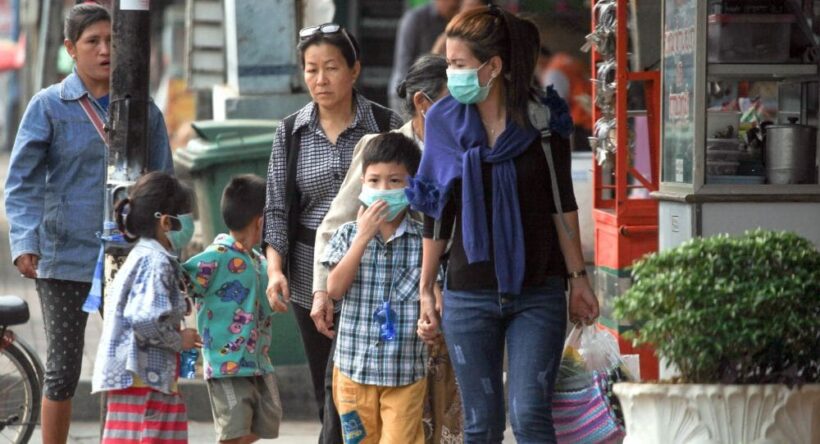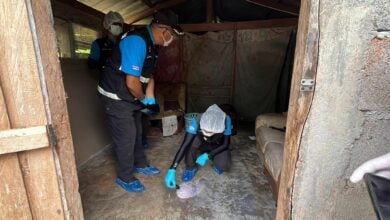Thailand’s air quality measurement standards raise concerns

by Chularat Saengpassa
From next month, the Pollution Control Department (PCD) will set PM2.5 particles as an indicator of Thailand’s air quality, but the move does not ease the concerns of people in the know.
“I must tell you that the PCD intend to use the ‘24-hour mean’ as the indicator and that may be misleading,” said Tara Buakamsri, the country director for Thailand at Greenpeace Southeast Asia.
He pointed out when the quantity of PM2.5 particles was calculated across a 24-hour period, it could sometimes hide the fact that air pollution had reached an unsafe level during some hours of the day.
According to the World Health Organisation (WHO), about 7 million people die every year because of exposure to both outdoor and household air pollution. Since 2013, WHO has described PM2.5, a tiny particle that is 2.5 microns or less in width, as carcinogenic. PM2.5 can easily enter the respiratory system, lungs and blood vessels.
In Thailand’s Chiang Mai province, 950 people were rushed to Chiang Dao Hospital’s emergency department between March and April in 2016 and 2017 as the province suffered a serious smog crisis. The patients were diagnosed with emphysema, ischaemic heart disease, stroke and lung inflammation. Of that group, 68 died. Another 477 locals died in the same period.
“We cannot say that they died of pollution but statistics show that when the amount of PM2.5 rises by 10 micrograms per cubic metre of air, the death rate rises by 0.15 per cent,” said Professor Chaicharn Phothirat, who heads the Department of Internal Medicine, Faculty of Medicine, at Chiang Mai University.

Chaicharn said his studies also found links between the soaring volume of PM2.5 and PM10 particles, and hospitalisations. PM10 refers to particles whose diameter is no more than 10 micrometres. PCD, an official government agency, has for more than a decade judged air quality solely on the basis of PM10 indications.
But last year, Greenpeace brought public attention to Thailand’s failure to include PM2.5 in its official air-quality monitoring, and thus not fully reflecting actual risks in many provinces. As air pollution has become increasingly visible in the form of smog, the Greenpeace position received widespread attention. PCD felt the heat and revisited its air-quality criteria.
Currently, about 28 air-quality monitoring stations in Thailand are equipped with devices to measure the amount of PM2.5. Before the end of next year, as many as 53 stations should have had the devices installed. PCD director-general Sunee Piyapanpong said that starting from next month, people would be able to check air quality by themselves via the Air4thai application and https://air4thai.pcd.go.th.
The app is compatible with both Android and iOS devices. Sunee said when people get updates about air quality, they will then be better able to protect themselves.
As of Saturday morning the Air4Thai App measured Chiang Mai’s Air Quality Index at 44 and ‘good’, Bangkok’s AQI at 62 and ‘moderate’, Phuket’s AQI is 33 and ‘good’.
SOURCE: The Nation Weekend

Join the conversation and have your say on Thailand news published on The Thaiger.
Thaiger Talk is our new Thaiger Community where you can join the discussion on everything happening in Thailand right now.
Please note that articles are not posted to the forum instantly and can take up to 20 min before being visible. Click for more information and the Thaiger Talk Guidelines.
Leave a Reply
You must be logged in to post a comment.









